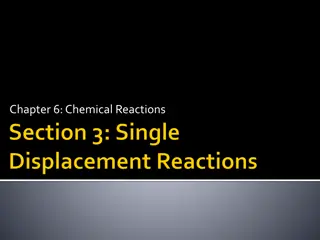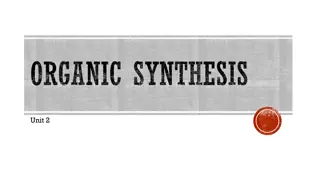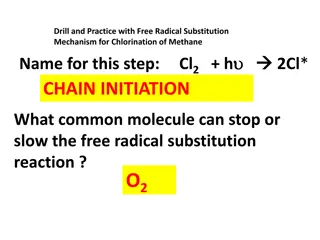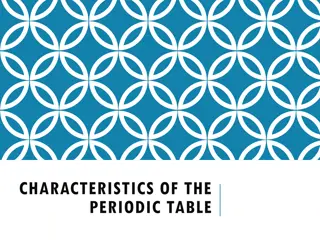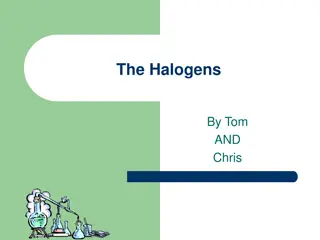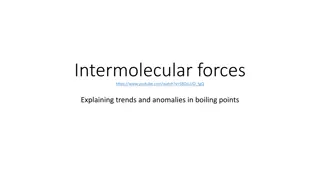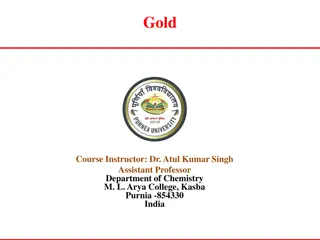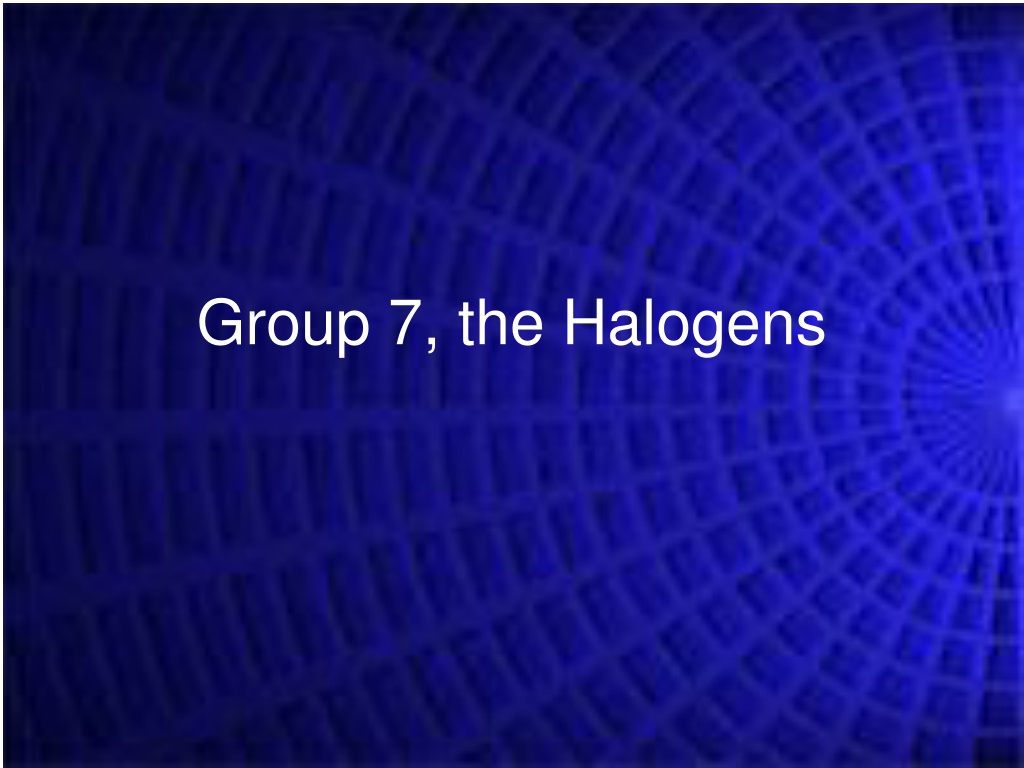
Explore the Halogen Group: Properties, Reactions & Compounds
Learn about the Halogen Group, a unique set of nonmetals known for their reactivity, displacement reactions, and involvement in various compounds like silver halides. Discover the meaning of "halogen" and key characteristics of fluorine, chlorine, bromine, and iodine in this informative guide.
Download Presentation

Please find below an Image/Link to download the presentation.
The content on the website is provided AS IS for your information and personal use only. It may not be sold, licensed, or shared on other websites without obtaining consent from the author. If you encounter any issues during the download, it is possible that the publisher has removed the file from their server.
You are allowed to download the files provided on this website for personal or commercial use, subject to the condition that they are used lawfully. All files are the property of their respective owners.
The content on the website is provided AS IS for your information and personal use only. It may not be sold, licensed, or shared on other websites without obtaining consent from the author.
E N D
Presentation Transcript
Representative Elements 2 Group 17 The Halogen Group All the elements in Group 17 are nonmetals except for astatine, which is a radioactive metalloid. These elements are called halogens, which means salt-former. All of the halogens form salts with sodium and with the other alkali metals.
Representative Elements Group 17 The Halogen Group The halogen fluorine is the most reactive of the halogens in combining with other elements. Chlorine is less reactive than fluorine, and bromine is less reactive than chlorine. Iodine is the least reactive of the four nonmetals.
Some facts reactivity Decreasing 1) Reactivity DECREASES as you go down the group (This is because the electrons are further away from the nucleus and so any extra electrons aren t attracted as much). 2) They exist as diatomic molecules (so that they both have a full outer shell): Cl Cl 3) Because of this fluorine and chlorine are liquid at room temperature and bromine is a gas
The halogens some reactions 1) Halogen + metal: + - + Cl Na Cl Na Halogen + metal ionic salt 2) Halogen + non-metal: + Cl H Cl H Halogen + non-metal covalent molecule
Displacement reactions To put it simply, a MORE reactive halogen will displace a LESS reactive halogen from a solution of its salt. Potassium chloride KCl(aq) Potassium bromide KBr(aq) F Potassium iodide KI (aq) Decreasing reactivity Chlorin e Cl2 Bromin e Br2 Iodine I2 Cl Br I
Halogen compounds Silver halides(e.g. silver chloride, silver bromide etc) These are used in photographic paper. They are reduced by light and x-ray radiation to leave a silver photographic image. Hydrogen halides(e.g. hydrogen chloride, hydrogen fluoride) When these dissolve in water they make acids and will turn universal indicator red.
Section Check Question 1 What does the term halogen mean?
Section Check Answer Halogen means salt- former. All the halogens form salts with sodium (and other alkali metals).
This powerpoint was kindly donated to www.worldofteaching.com http://www.worldofteaching.com is home to over a thousand powerpoints submitted by teachers. This is a completely free site and requires no registration. Please visit and I hope it will help in your teaching.


